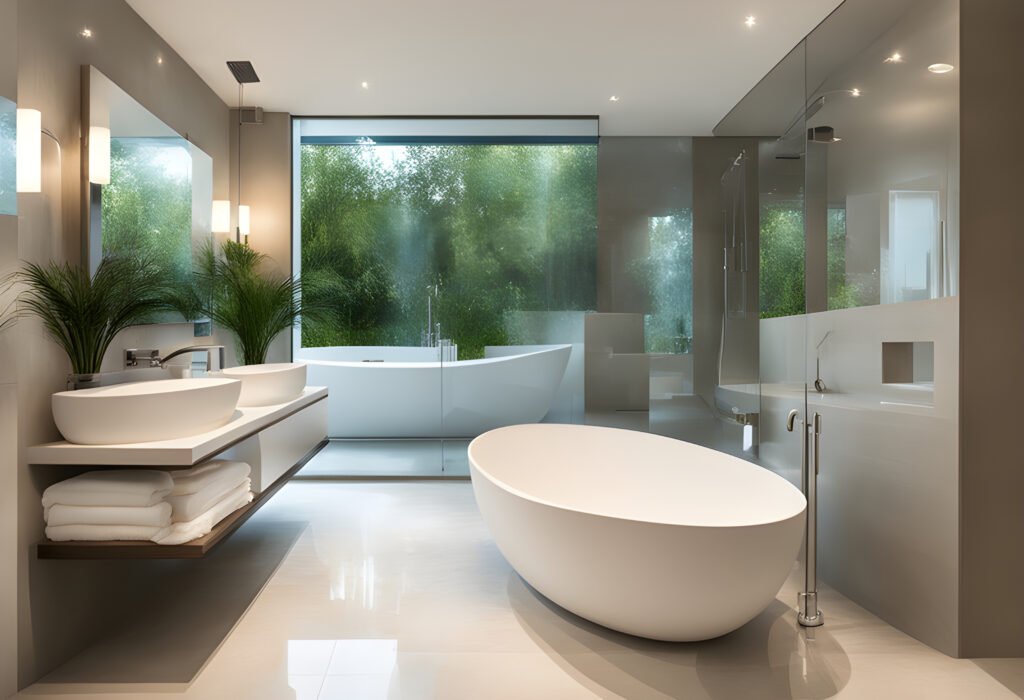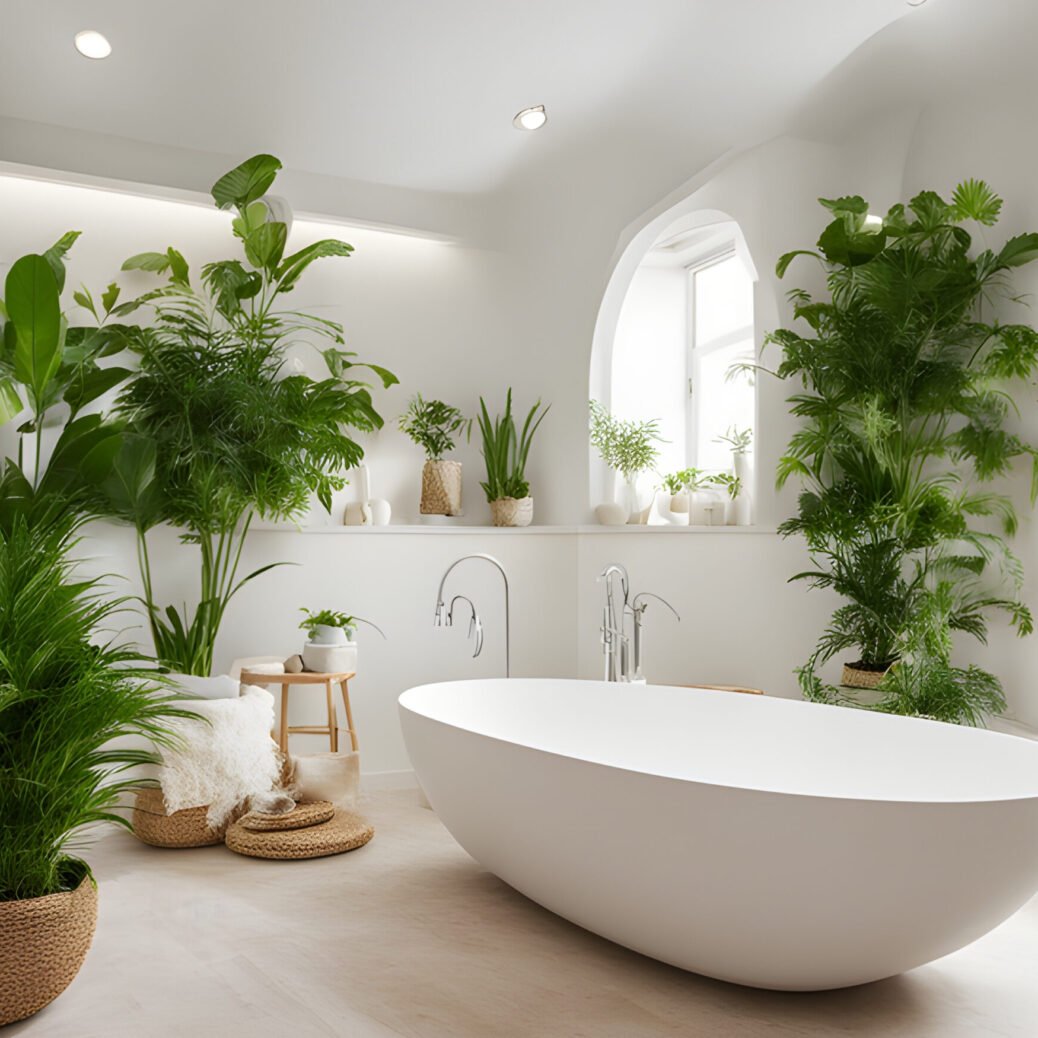The Art and Science of Sanitation: How Baths, Showers, and Toilets Are Made
Introduction to Sanitation Fixtures
Sanitation fixtures, such as baths, showers, and toilets, play a crucial role in contemporary living, intertwining hygiene with comfort. These essential components of any household or public facility are designed to facilitate personal cleanliness, promoting health and well-being among users. The increasing emphasis on sanitation standards has transformed how these fixtures are manufactured, making them more efficient and user-friendly to meet modern demands.
Baths serve as a tranquil escape, providing a relaxing environment that encourages personal time and self-care. The significance of a bath goes beyond mere relaxation; it also aids in maintaining physical hygiene, allowing individuals to thoroughly cleanse and refresh themselves. Similarly, showers have become an integral part of daily routines, offering quick and effective means of washing away dirt and grime. The design innovations in showerheads and controls enhance water flow efficiency, providing a luxurious experience while conserving water.
Toilets, perhaps the most vital sanitation fixture, are indispensable for promoting health standards in both residential and commercial settings. The proper installation and maintenance of toilets are critical for preventing contamination and protecting public health. The evolution of toilet designs has incorporated features aimed at enhancing user comfort, reducing water consumption, and improving overall functionality. Modern toilets now include dual-flush systems and smart technology that cater to the diverse needs of different users.
In summary, sanitation fixtures are essential for maintaining hygiene and enhancing comfort in our daily lives. This introduction sets the stage for a more in-depth exploration of the manufacturing processes behind baths, showers, and toilets, highlighting how these innovations contribute to improved sanitation standards and the overall quality of life.

Materials Used in Sanitation Fixture Production
The production of sanitation fixtures such as baths, showers, and toilets employs a variety of materials, each selected for its unique properties that contribute to durability, aesthetic appeal, and ease of maintenance. One of the most traditional and widely utilized materials in this sector is porcelain. Known for its smooth surface and non-porous nature, porcelain is highly resistant to staining and easy to clean, making it an ideal choice for toilets and baths. Its glossy finish not only enhances visual appeal but also provides a sanitary surface, reducing the risk of bacterial growth.
Acrylic is another popular material, particularly favored for shower stalls and bathtubs. Its lightweight nature simplifies installation, while its ability to retain heat makes it comfortable for users. Acrylic is also available in a broad range of colors and styles, offering significant design flexibility. Additionally, it is relatively easy to repair, as minor scratches can often be buffed out or repaired with specialized kits, extending the lifespan of acrylic fixtures.
Fiberglass is sometimes employed in the manufacture of shower bases and surrounds. It is known for its strength and affordability, making it a practical option for budget-conscious consumers. However, while fiberglass fixtures can be durable, they might not provide the same level of aesthetic appeal as porcelain or acrylic models. Stainless steel also finds its place in the sanitary ware market, particularly in commercial settings. Its robustness and resistance to corrosion make stainless steel an outstanding choice for environments where hygiene and durability are paramount.
In considering which materials to use for sanitation fixtures, manufacturers weigh factors such as longevity, ease of cleaning, and the overall look and feel. Each material contributes uniquely to the functionality and attractiveness of baths, showers, and toilets, ensuring they meet user expectations in both residential and public facilities.
The Manufacturing Process of Baths
The manufacturing of baths involves a meticulous process that ensures both form and function are achieved, resulting in high-quality products suitable for consumer needs. The first step in this process is material selection, which is critical as it determines the durability and aesthetic appeal of the final product. Common materials used for baths include acrylic, porcelain, fiberglass, and cast iron. Each material has unique properties, such as heat retention and weight, which influence the overall manufacturing approach.
Once the materials are chosen, the next phase is molding. In this step, the raw materials are heated and shaped into the desired form using various techniques. For acrylic tubs, for instance, sheets of heated acrylic are formed over molds to create the tub’s structure. Porcelain and cast iron baths typically involve pouring molten materials into molds, allowing them to cool and solidify into robust shapes. This crucial phase sets the foundation for the quality of the bath.
After molding, bathing products undergo glazing, which provides a glossy finish that is not only visually appealing but also crucial for hygiene, as it makes the surface easier to clean. Glazing is accomplished by applying a liquid glass coating that is then fired in a kiln, creating a smooth and durable surface. Firing, an essential step in the process, solidifies the glazing and enhances the overall resilience of the bath.
Finally, quality control is conducted to ensure that each bath meets stringent standards before being packaged and shipped. This step involves rigorous testing for structural integrity, surface imperfections, and the longevity of the glazing. Advanced technologies, such as precision measuring tools and automated inspection systems, are employed during this stage to guarantee that every product is up to standard, providing customers with a reliable bathing solution.
How Showers Are Created
The production of shower fixtures is a multifaceted process that involves various stages, from design conception to the final assembly of the unit. Initially, designers create specifications and blueprints for shower components, including shower trays, doors, and heads. These designs can vary significantly, catering to different aesthetic preferences and functional requirements. Some common materials utilized in the production process include acrylic, fiberglass, glass, and stainless steel, each offering distinct advantages in terms of durability and maintenance.
Once the design phase is complete, manufacturers proceed with the fabrication of shower trays, which serve as the base for the entire shower unit. The trays are typically molded to ensure proper drainage and to fit seamlessly within a designated space. This step is critical, as the tray must not only be visually appealing but also functional, capable of withstanding the daily wear and tear of water use.
Next, the production of shower doors and heads takes place. Shower doors may be framed or frameless and are crafted from tempered glass to enhance safety and durability. The glass is often treated for easy cleaning and anti-lime scale properties, ensuring a crystal-clear view over time. Showerheads are designed with an array of features, such as adjustable spray patterns or water-saving technology, further enhancing consumer experience.
After all individual components are manufactured, the assembly begins. This stage involves precise engineering to ensure that parts fit correctly and function as intended. Manufacturers pay close attention to quality control, checking for leaks and ensuring that all moving parts operate smoothly. Ultimately, the goal is to balance aesthetics and functionality, resulting in a shower fixture that not only looks great but also performs exceptionally well, elevating the overall bathing experience.

Toilet Manufacturing Explained
The manufacturing of toilets involves a detailed process that combines art and science to create essential fixtures for sanitation. Central to this process are the key components of the toilet, which include the bowl, tank, and flushing mechanisms. Each component is designed with both functionality and efficiency in mind to ensure that the toilet not only performs well but also adheres to health standards.
The primary raw material used in toilet production is porcelain, known for its durability and ease of cleaning. The first step in the manufacturing process is molding; porcelain is mixed with additives to improve its properties and then shaped into the toilet bowl and tank using specially designed molds. This process often employs both traditional handcraft techniques and advanced machinery to ensure precision in form and structural integrity. Once molded, the components are fired at high temperatures in kilns, which hardens the porcelain and makes it water-resistant.
Following the initial firing, the toilets undergo glazing, a process that adds a glossy finish to the surface, enhancing aesthetic appeal while providing a sanitary coating that inhibits bacterial growth. After glazing, the components are inspected for quality to ensure they meet both aesthetic and functional standards. The next phase involves assembling the bowl and tank, as well as integrating the flushing mechanism, which may utilize gravity, pressure, or dual-flush systems for efficiency. These mechanisms are crucial, as they determine the toilet’s water usage, significantly impacting environmental sustainability while still providing effective waste removal.
In conclusion, the process of toilet manufacturing is a complex interplay of technology, design, and environmental considerations. Understanding this art and science helps us appreciate the importance of toilets in maintaining public health and sanitation.
Innovations in Sanitation Technology
Recent years have witnessed significant advancements in sanitation technology, particularly in the design and functionality of baths, showers, and toilets. A key area of focus has been the development of water-saving fixtures. These innovations aim to reduce water consumption while maintaining optimal performance, thereby promoting sustainability in residential and commercial buildings. For instance, modern showerheads and faucets are now available with low-flow designs that achieve substantial water reduction without compromising user experience.
In addition to water-saving features, the emergence of smart toilets represents a revolutionary shift in sanitation technology. These units often incorporate integrated technology that enhances comfort, hygiene, and convenience. Smart toilets can be equipped with heated seats, adjustable water temperature, and even built-in bidets, providing a customizable experience for users. Moreover, some models include sensors that automatically open and close lids, as well as self-cleaning functions that utilize ultraviolet light for sanitation. This technology not only enhances convenience but also helps reduce the spread of pathogens, contributing to improved public health.
Alongside these technologies, there is a growing emphasis on eco-friendly materials used in the production of baths, showers, and toilets. Manufacturers are increasingly adopting sustainable practices by sourcing materials that are recyclable or made from reclaimed resources. This shift not only supports environmental conservation but also aligns with consumer demand for products that are less harmful to the planet. Innovations such as bamboo shower mats and recycled ceramic in toilet manufacturing exemplify this trend, highlighting a commitment to sustainability in the sanitation industry.
Overall, the landscape of sanitation technology is evolving rapidly, driven by the need for efficiency, comfort, and ecological responsibility. As these innovations continue to emerge, they promise to redefine how we engage with essential fixtures in our daily lives.
Quality Control Measures in Sanitation Manufacturing
In the manufacturing process of sanitation products such as baths, showers, and toilets, quality control is paramount to ensuring that each product meets stringent safety, durability, and performance standards. The various quality control measures implemented begin right at the design phase, where prototypes undergo extensive testing to evaluate their functionality and efficacy. This initial phase allows manufacturers to identify any potential issues before mass production begins.
Once the production is underway, several checks are in place throughout the entire manufacturing cycle. One key aspect of quality control includes material inspections to ensure that only high-grade materials are utilized. This is crucial given that the materials directly affect the longevity and overall performance of the sanitation fixtures. For instance, products must be resistant to corrosion and wear to maintain their integrity over time. Furthermore, some manufacturers conduct random sampling of the products to ensure that they consistently meet defined specifications.
Tests such as stress testing and water flow analysis are routine during the quality control phase. These tests simulate the conditions that the fixtures will face in a real-world setting, allowing manufacturers to evaluate not only their durability but also their operational performance. Additionally, safety checks are conducted to ensure that any surfaces or edges are free from sharp points and are safe for consumer use.
Once the sanitation products pass all testing phases, they undergo final inspections before packaging and shipping. This systematic approach to quality control not only results in reliable and efficient products but also elevates consumer confidence in the brand. Ultimately, rigorous quality assessments in sanitation manufacturing help guarantee that the baths, showers, and toilets delivered to the market are safe and highly functional.
Installation of Sanitation Fixtures
The installation of sanitation fixtures, specifically baths, showers, and toilets, is a crucial aspect of modern plumbing systems. Proper installation not only ensures the functionality of these fixtures but also prevents potential issues such as leaks, clogs, and water damage. For those considering a do-it-yourself (DIY) approach, understanding the basic installation process is essential. However, it is important to recognize when to call in professional plumbers to guarantee a successful installation.
When installing a bath, the first step is to prepare the area. This often involves assessing the plumbing lines and ensuring that the subfloor is level and adequately reinforced. Once the physical space is ready, the bath unit is positioned, and the drain and overflow assembly are connected to the existing plumbing. Following this, securing the tub with adhesive or screws is vital to prevent any movement that could lead to leaks over time.
Shower installations typically follow a similar protocol. Whether opting for a prefabricated shower stall or a custom-tiled shower, the installation process requires proper waterproofing measures. Ensuring that the plumbing fittings are tightly sealed and secured is paramount. In addition, a sloped base is necessary in the shower to allow for effective drainage.
Toilet installation, while seemingly straightforward, necessitates careful attention to detail. It involves the secure attachment of the toilet to the wax seal, which creates a watertight connection with the drainage pipe. An overturned or misaligned wax seal can lead to serious leaks and compromise sanitation. While skilled DIYers may handle this task, complications can arise, necessitating professional intervention.
In conclusion, whether one is installing baths, showers, or toilets, the importance of proper procedures cannot be overstated. Mastery of the required techniques and awareness of when to enlist professional help can lead to a seamless and functional sanitation system in any home.
Maintenance and Care for Longevity
To ensure the longevity and optimal performance of baths, showers, and toilets, consistent maintenance and care are essential. Regular cleaning is one of the key practices that can extend the lifespan of these sanitary fixtures. Using mild, non-abrasive cleaners can help prevent the buildup of lime scale, soap scum, and other residues that may impair functionality or detract from their appearance. For baths and showers, it is advisable to clean the surfaces at least once a week, focusing on areas prone to moisture accumulation which can lead to mold and mildew. Toilets should also be cleaned regularly using a specialized cleaner that targets bacteria while preserving the integrity of the toilet’s porcelain finish.
In addition to routine cleaning, performing regular maintenance checks can catch potential problems before they escalate. Inspecting caulking around bathtubs and showers is essential, as damaged seals can lead to water leaks or damage to surrounding surfaces. It is recommended to replace caulking every few years or as needed. Additionally, homeowners should check for leaks in toilets by placing a few drops of food coloring in the tank; if the color appears in the bowl after a few minutes, this indicates a leak that needs addressing.
Moreover, addressing little technical issues promptly can prevent more significant problems later. Clogged drains can often be remedied with a plunger or a snake tool, while persistent drainage issues may require professional intervention. Be cautious with products designed to clear clogs, as harsh chemicals can potentially damage plumbing fixtures over time. Regularly inspecting the condition of flush mechanisms in toilets, as well as showerheads and faucets, can help catch issues early and ensure that water efficiency standards are maintained, contributing to a sustainable bathroom environment.
By incorporating these maintenance and care practices into routine household chores, homeowners can significantly prolong the life of baths, showers, and toilets, ensuring that they remain functional and aesthetically pleasing for years to come.

